
When you need to drill a hole bigger than an inch in diameter or so, a hole saw is the right tool for the job. However, hole saws have a well-deserved reputation for being no fun to use. If the prospect of using one conjures memories of an ice pack on your wrist and the smell of burning wood, relax and read on.
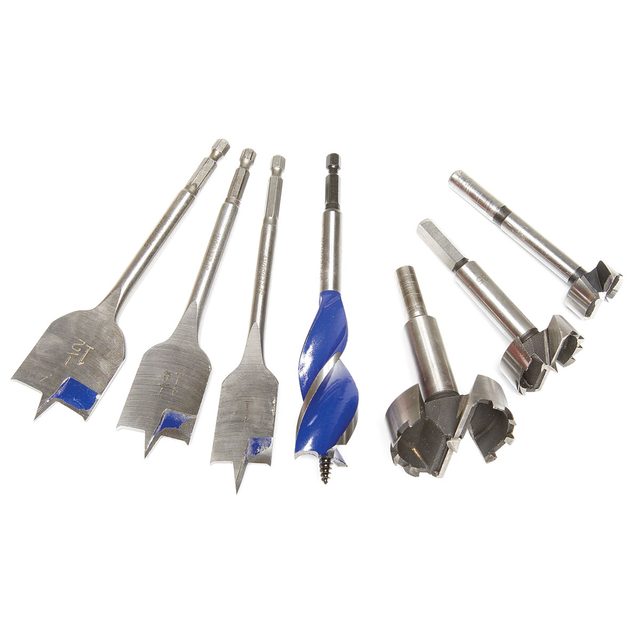
A Bit Is Better Than a Hole Saw for Some Holes
For holes one inch in diameter or less, a spade, auger or Forstner bit is a better choice than a hole saw. These bits are far less likely to catch and twist your arm, and there’s no plug to pry out, just wood shavings. So start building your hole saw kit with sizes that are larger than one inch.
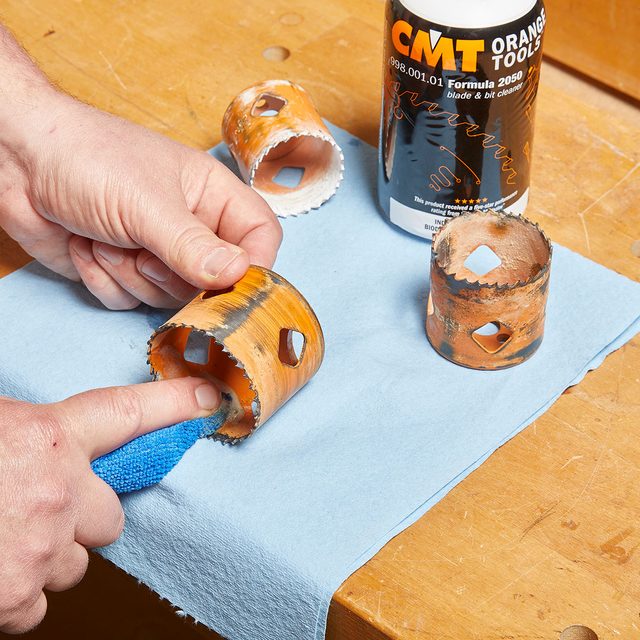
Keep It Clean
Hole saws are often tasked with cutting through studs and joists, which are typically pine, spruce or Douglas fir. All of these species contain lots of pitch and resin, which build up on the hole saw’s teeth. This buildup adds friction, slows cutting and increases heat. This excess heat causes the teeth to dull very quickly. Cleaning off the pitch after use greatly extends the life of hole saws. You can buy specially formulated cleaners, such as CMT Formula 2050 Blade & Bit Cleaner ($18 for an 18-ounce bottle) at home centers. Or, do a quick search online to find plenty of homemade solutions.
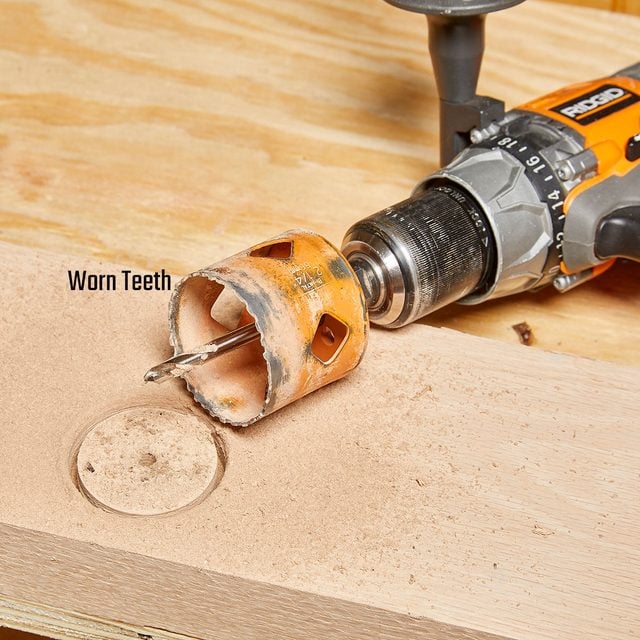
Don’t Struggle With Worn-Out Hole Saws
Like any other cutting tool, a hole saw will get dull with use. If your hole saw cuts slowly or starts to smoke, it’s likely dull and needs replacing. If you’re adept at sharpening, you can give it a shot, but a new hole saw makes life much easier.
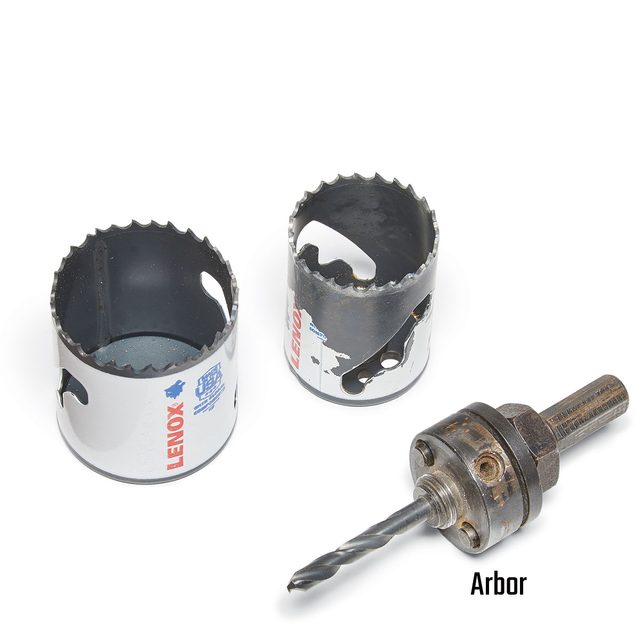
Build Your Own Kit
A quality hole saw kit costs $50 to $200, depending on the number of hole saw sizes and the type of teeth (bimetal, carbide or diamond; bimetal teeth are sufficient for most work). If you can’t afford to buy the whole kit at once, don’t worry. Most manufacturers sell individual hole saws and arbors. Build your kit one saw at a time as needed, sticking with one brand so you can use the dedicated arbor for new hole saws. That way, you won’t end up with odd-sized hole saws that you’ll never use.
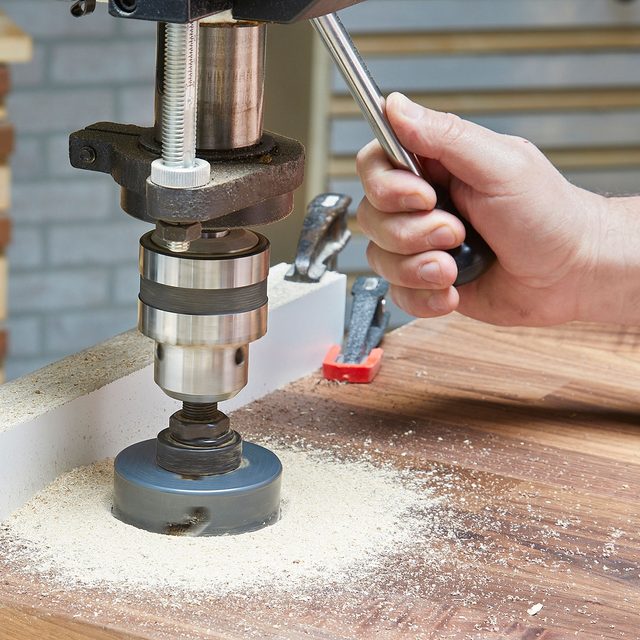
Use a Drill Press
Whenever it’s an option, use a hole saw in a drill press. A drill press ensures that the hole is straight and enables you to clamp the workpiece down securely. The drill press’s handle gives you total control over the pressure you’re applying, and you can easily adjust the drill press to run at the proper speed.
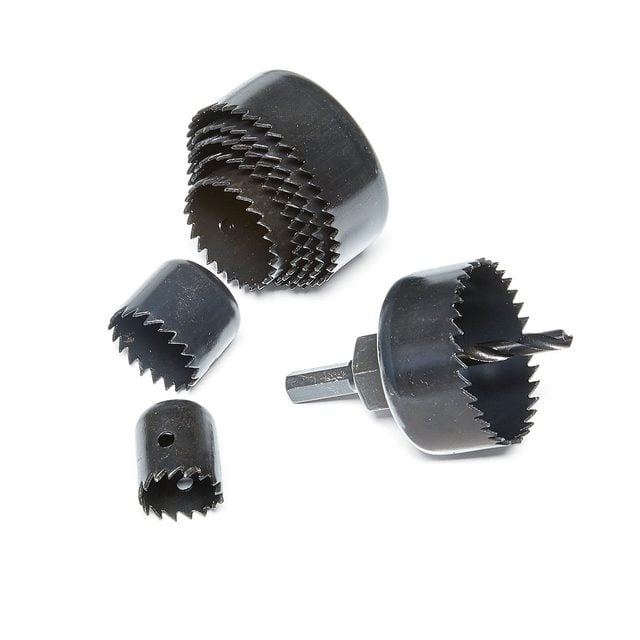
Avoid Cheap Hole Saw Kits
A cheap kit might seem like a great deal, but you get what you pay for. The hole saw teeth dull very quickly and the saws are often shallow, limiting the thickness of the material you can drill through. Go for a higher quality option if you can.

Back up Your Workpiece
When you’re cutting holes that need to look tidy on both sides, clamp a sacrificial backer board under the workpiece to prevent blowout (splintering on the exit side). If you’re at the drill press, a backer board also serves to protect your drill press table.
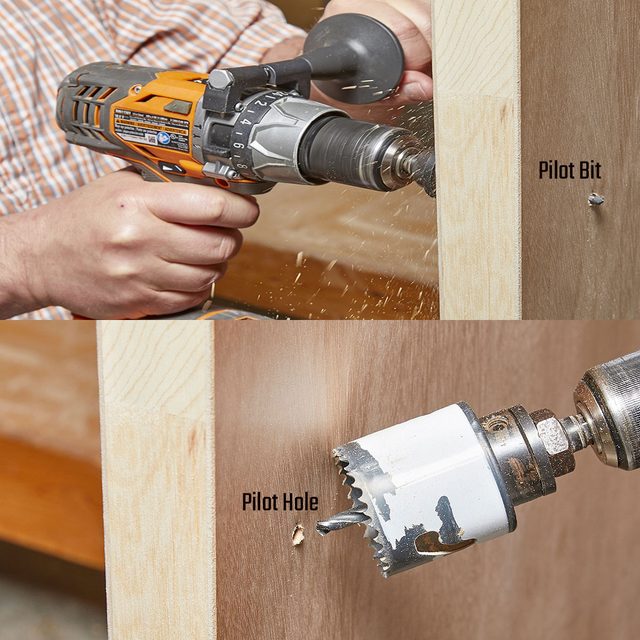
Cut From Both Sides
When possible, drill from both sides. This does two things. First, it helps prevent blowout. Second, you don’t end up with the cutout plug stuck in the hole cylinder. Start cutting from one side, stopping as soon as the pilot bit comes out the other side. Next, insert the pilot bit in the hole on the other side of the workpiece and finish the cut with the hole saw.
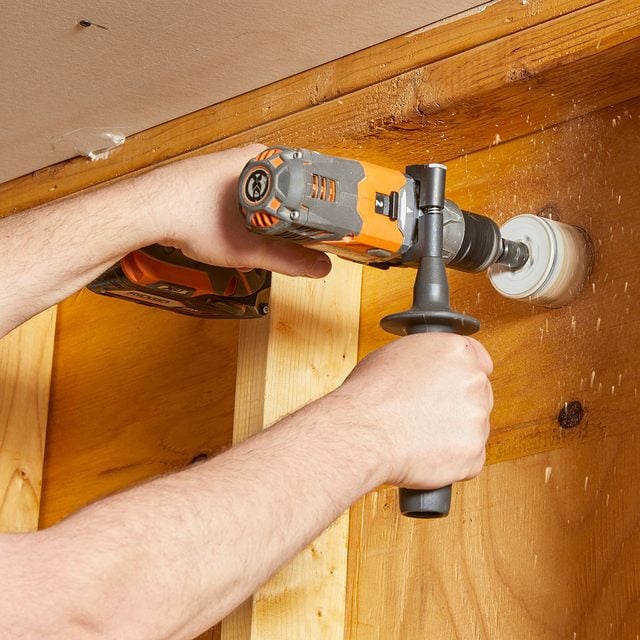
Use an Auxiliary Handle
Although you’ll often use a hole saw in a handheld drill, sawing large holes is a tough job, so use your most powerful drill. Besides power, the drill should have an auxiliary handle, as hole saws don’t act like drill bits. They have a tendency to “catch,” giving your wrist a nasty twist. It can even yank the drill right out of your hand while the spinning drill handle crashes into anything in its path. An auxiliary handle lessens the chance of losing your grip.
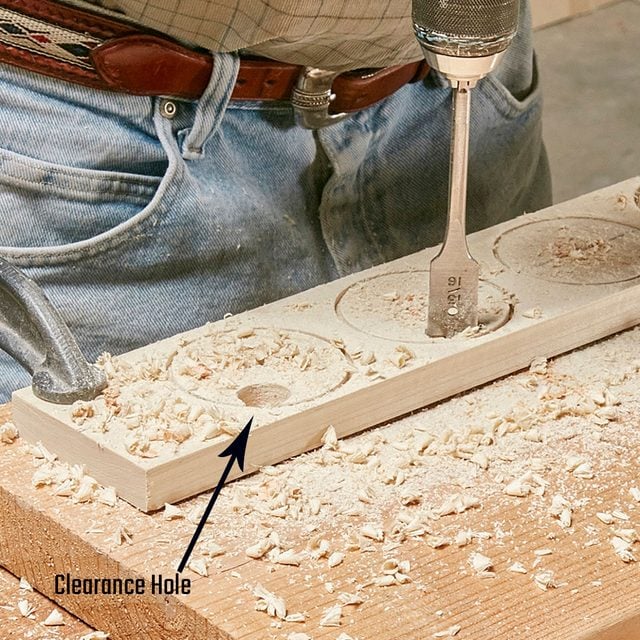
Drill Clearance Holes
As a hole saw is cutting, there’s nowhere for the sawdust to effectively exit the kerf. So it gets packed into the teeth, causing slow cutting, heat, burning and premature dulling. Drill a couple of 1/2-in. clearance holes to give the sawdust a way out. To get the clearance holes in the right place, start the pilot bit and let the teeth cut in about 1/16 in. Drill clearance holes through the workpiece, just inside the kerf.
